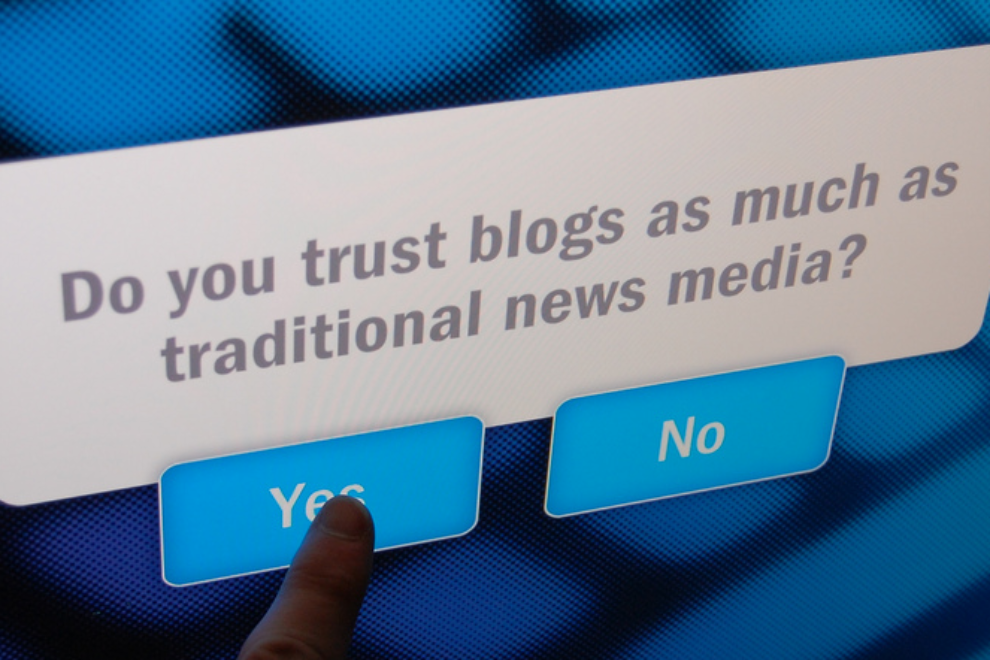
It’s extremely disheartening to see how the concept of news reporting has degenerated in recent times. I look around me and all I see is sensationalism, unbalanced reporting and sometimes downright misinformation. In this age of online media and social media proliferation, everyone with an internet enabled device is a reporter and everyone who has managed to purchase a domain name (or not) is a blogger, and sometimes deluded into believing he or she is a journalist.
Who is a Journalist? The basic textbook definition of who a journalist is, is coming under serious debate. Because any first year Mass Communication student will tell you that “a journalist is someone employed to regularly engage in gathering, processing, and disseminating news and information to serve the public interest“. This definition alone, I believe, is the basis of the problems we are facing with the proliferation of the online media platforms.
So based on the changing clime, how do we define who a journalist really is? What are the factors or the measuring parameters? Deputy managing editor and standards editor of the Associated Press, Thomas Kent, wrote that a set of basic ethical tests, applied to a person’s body of work, could build on the idea of journalism, and they are:
- Is the person’s product intended for the general public?
- Is the work creative and analytical rather than a simple relay of raw information?
- Is the reporting based on facts rather than fabrications? Are statistics honest, images un-manipulated, quotations correct?
- Does the product convey multiple points of view?
- Does the person or his organization guard against conflicts of interest that could affect the product? If conflicts are unavoidable, are they publicly acknowledged?
- Does the person reveal his or her identity and contact information?
- Does the person publicly correct errors?
- In view of the above listed test questions, how many of the “news reports” from Nigerian news blogs qualify to be classified as standard journalistic writing?
I do recognize that the majority of Nigerian blogs (the most visible ones at least) are in no way qualified to be called “news blogs”. And most Nigerian bloggers are more interested in “gossip and entertainment” blogging. That’s understandable and there’s definitely a market for that. My problem is when such blogs decide to dabble into serious news or have what I call a “blog identity crisis”. When that happens, what an average reader experiences is chaos. A mixture of gossip, rumor, unbalanced news, badly written articles, mixed with the inevitable nudity and all packed under a sensational headline.
The frantic desire to generate traffic is also a problem with these pseudo news blogs. As someone who blogs myself, I understand the need to have blog traffic. I mean, when I write something, I want someone to read it. After all, I’m not writing for myself, am I? And the more people read my articles, the better. That being said, it’s not an excuse to throw caution to the wind and become reckless.
Even if you’re a “news, gossip and entertainment” blogger, how do you justify a headline that screams at readers to download the “leaked nude video of a UNILAG girl”? The moral factor aside, there are legal implications as well. In October 2013, California Governor Gov. Jerry Brown signed a bill into law, banning “revenge porn” — nude or sexual photos or images posted online by an angry ex; the offence could carry six months in jail and a $1,000 fine – do we wait for the Nigerian Government to do this or do we censor ourselves?
The modern day “news blog” is a cesspool of nudity, rumor mongering and bad grammar. There is nothing wrong with “entertainment gossip” and if a blogger wants to add some real news, then social responsibility must be employed in carrying out the job. Social responsibility helps create professionalism in media by setting up a high level of accuracy, truth, and information. Social responsibility cannot be ignored by online news media in these present times, especially at a time when Nigeria’s security is being buffeted and our unity and peace hangs in the balance.
The rush to post bad news first without complete verification for blog traffic and bragging rights, is dangerous at this time because it can cause panic and spread dissent. Nobody is happy when stories of bomb blasts and kidnappings abound all over social media and the seeming “glee” of some bloggers to report it, is questionable. To make matters worse, gory and unsightly and sometimes, inaccurate and unrelated photos are posted in an attempt to cause panic and public uproar.
How many of these “news bloggers” know and bother to apply photo-journalism code of ethics? A very important part of the code says: “Treat all subjects with respect and dignity. Give special consideration to vulnerable subjects and compassion to victims of crime or tragedy”. How is this applied when readers are bombarded with pictures of burnt dead bodies, and unclothed crime victims in their hospital beds?
Traditional news media have the luxury of sub editors and senior editors who act as check and balances and often act as the voice of reason to curb over enthusiastic reporters. But for the “online/social media journalist”, he/she more often than not, is reporter, editor and publisher all in one. This places a huge responsibility on such a person and I can only hope and pray that more bloggers will take time to study the ethics of true journalism and apply reason to their blogging.
“And I tell you this, you must give an account on judgment day for every idle word you speak. 37 The words you say will either acquit you or condemn you.” – Matthew 12: 36-37 (NLT)
“A troublemaker plants seeds of strife; gossip separates the best of friends.” – Proverbs 16:28 (NLT)
Written by Fola Folayan // Originally Published on 4Lah.com






This is a great analysis of the way we look at journalism these days. I didn’t know of those ethical tests you mentioned above but they certainly provide good context to what could be described as a true journalist. I’ve copied them down for future reference. It will be interesting to see how much of my own work ticks those boxes 🙂